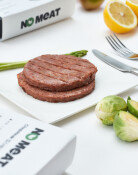[Opinion] Europe Wine, Korea - Rice
[Opinion] Europe Wine, Korea - Rice
Posted July. 07, 2007 03:04,
May 24, 1976 was the day California wine dealt a blow to the reputation of French wine by being preferred in a blind test. The test result swept the whole nation of France, and some French men even said that the test was rigged. The same day last year, in order to mark the 30th anniversary of this test or Judgment Day of Paris, the same test was carried out in London, Britain and Napa Valley of California in the U.S. The result was a complete defeat of French wine: The Californian wined took away the 1st to 5th rankings.
America, Australia, Chile and South Africa and other latecomers in winemaking are fast catching up with the French and other traditional winemakers in Europe. This means that the glory and reputation of the wine continent are fading away. The European Commission, in an emergency measure, announced that 200,000 hectares, or 6% of Europes 3.6 million hectares of vineyards will not plant grapes, thereby preventing excess supply.
Non-European wines are getting increasingly popular, because they are successfully creating added value by developing a low-end wine market and promoting winery tourism. In a luxurious European wine market where a bottle of wine costs hundreds or thousands of dollars, these non-European wines with their affordable prices (around 10 dollars) and good quality have quickly appealed to consumers all around the world.
The first rice exported from Korea to the U.S. in May is getting popular among the American consumers. Harvested in North Jeolla Province, Jehuimigok is being sold for $35 for a 10kg bag. Even though it is about double the price of U.S.-harvested rice Calrose, which is sold for $18 for a 9.07kg bag, Jehuimigok is doing well in America.
Admittedly, the purchases of the rice have been made mostly by ethnic Koreans residing in the U.S. who want a little taste of their motherland, but this also shows a success potential for Korea: If it develops high-end rice brands leveraging a niche premium market, Koreas rice will no longer lag behind others. The same applies to other agricultural produce. Korean farmers should move from small variety, mass production, to large variety, limited production, which will enable them to be more competitive by selling premium-level vegetables and fruits. There is no permanent winner in the agricultural produce market; therefore, depending on our strategies and efforts, we can also make headway in agriculture on the world stage. Non-European winemakers and Koreas Jehuimigok are teaching us lessons.
Chung Sung-hee, Editorial Writer, shchung@donga.com





![트럼프의 그린란드 병합 의지, ‘이 사람’이 불씨 지폈다[지금, 이 사람]](https://dimg.donga.com/c/138/175/90/1/wps/NEWS/IMAGE/2026/01/20/133193287.1.jpg)

